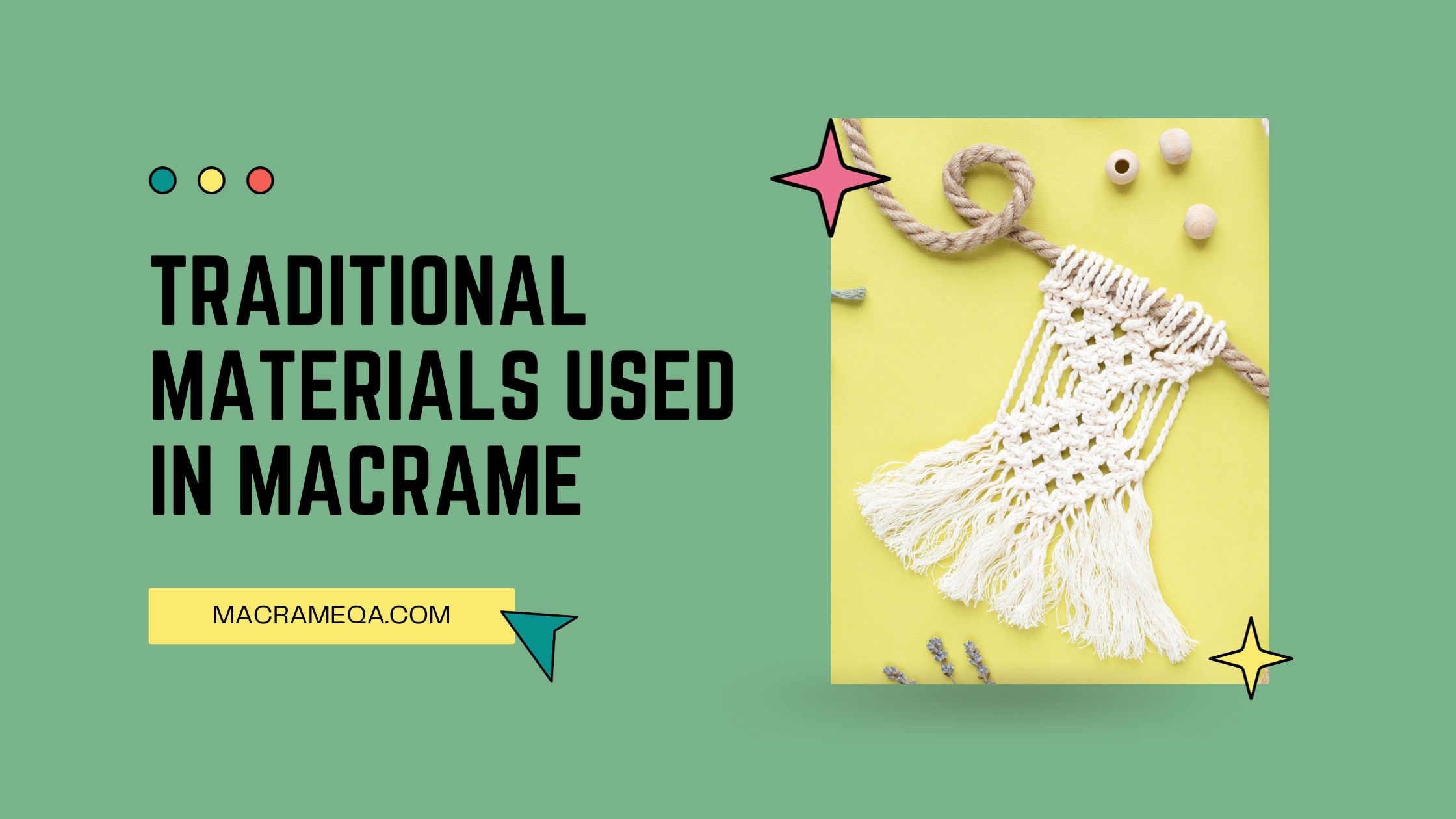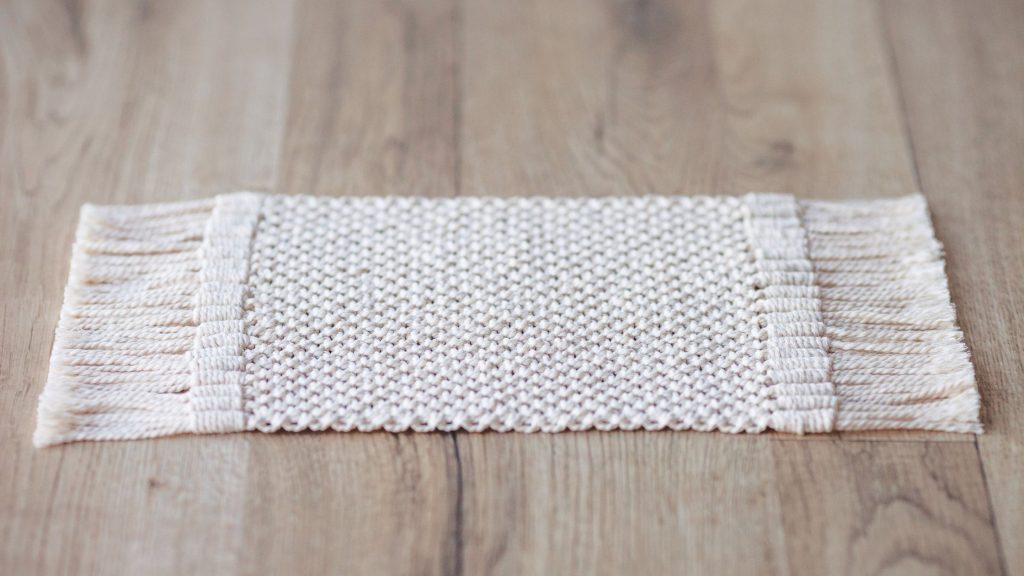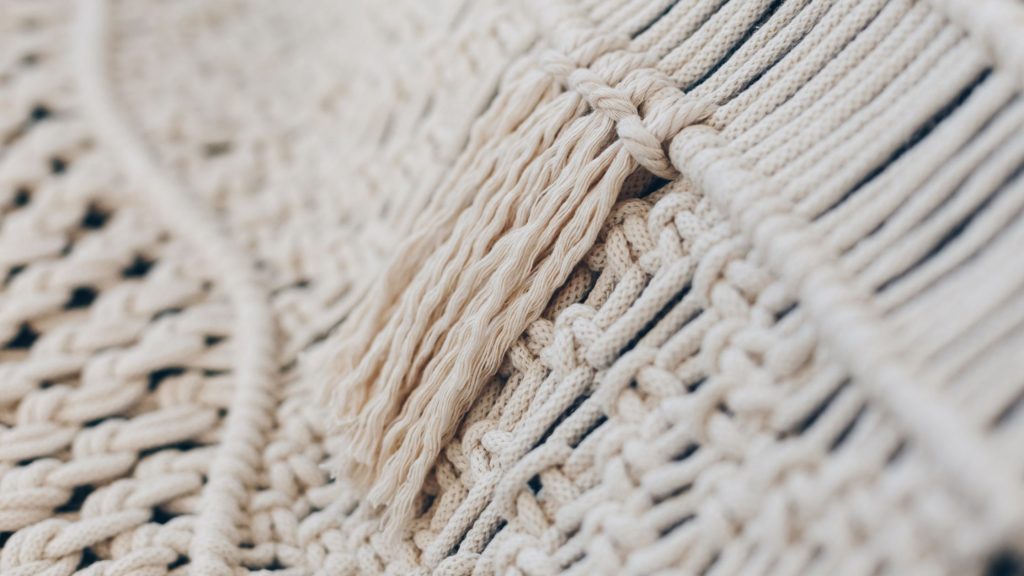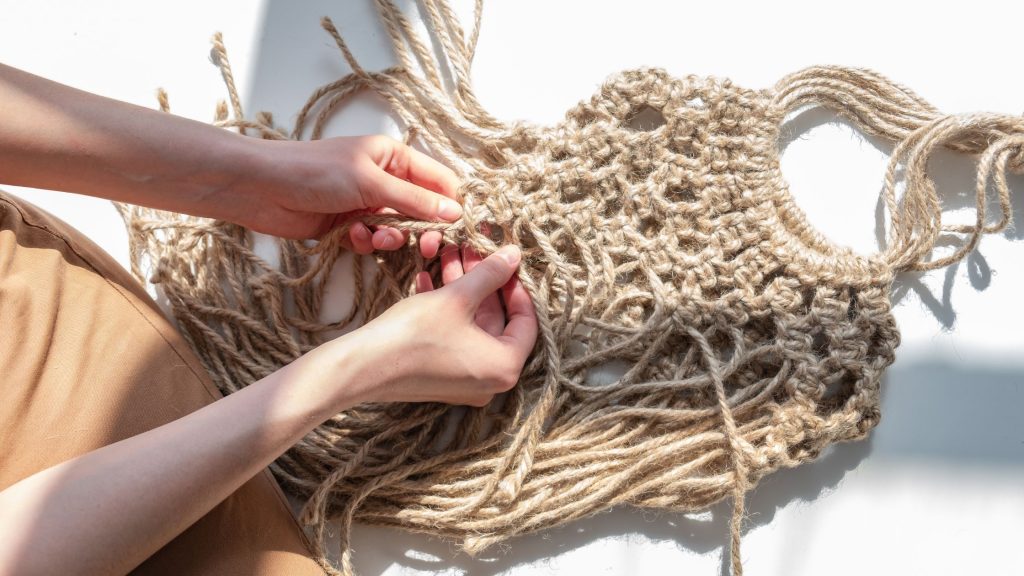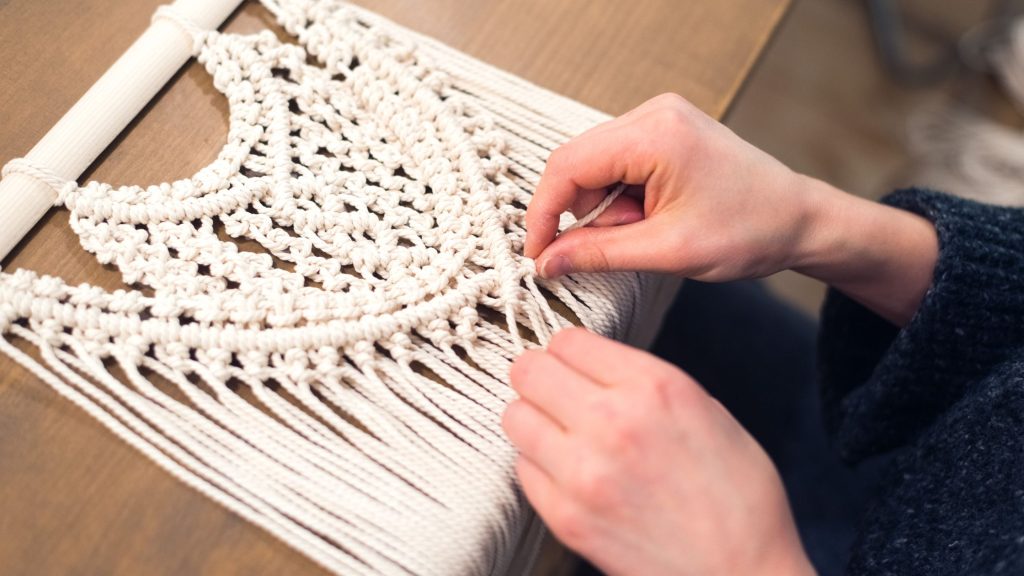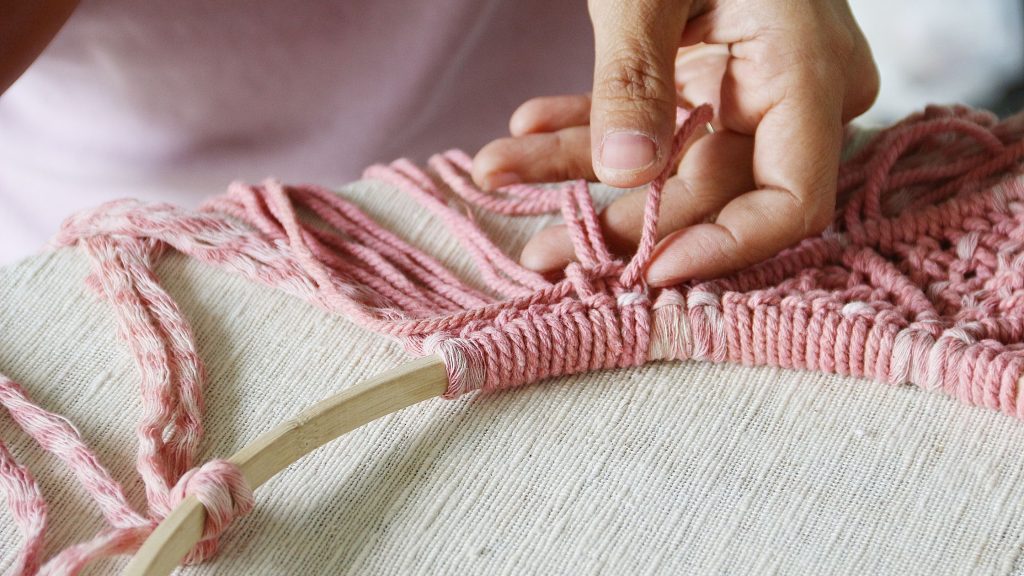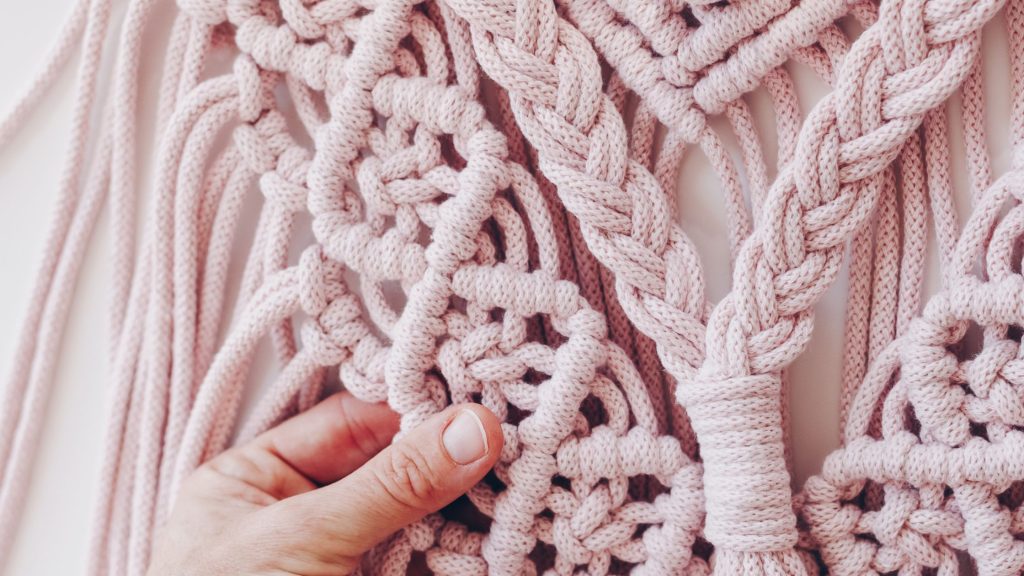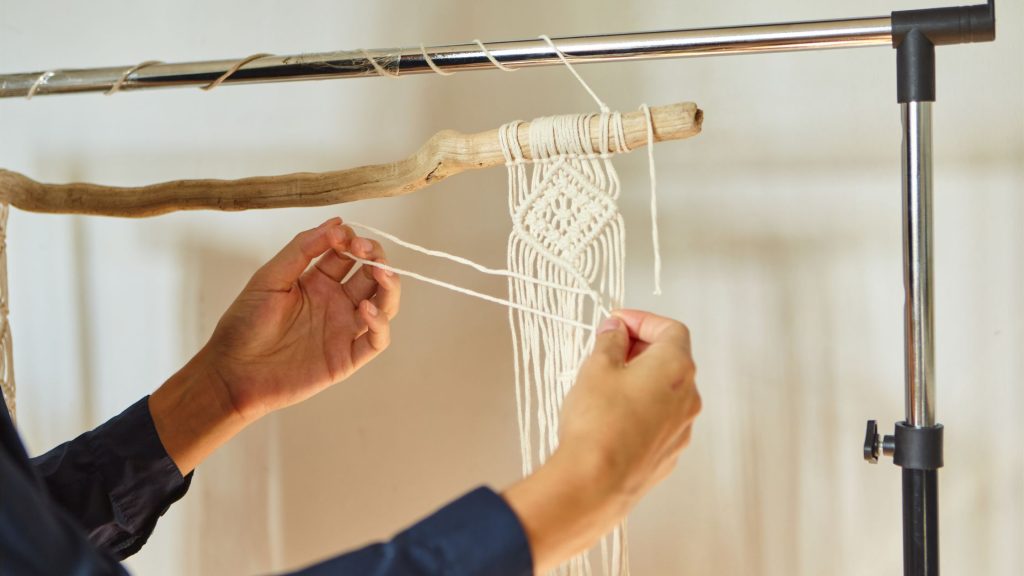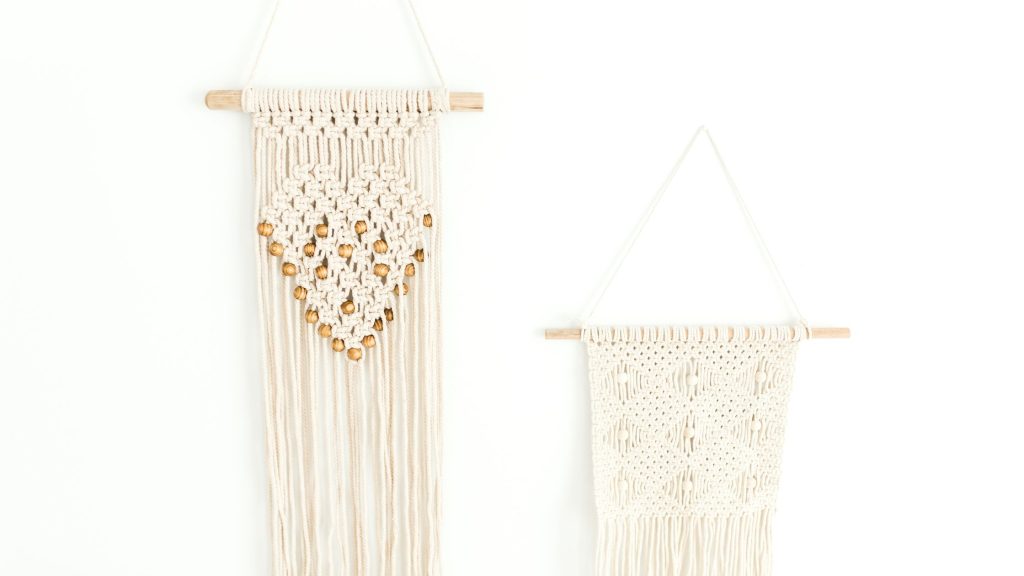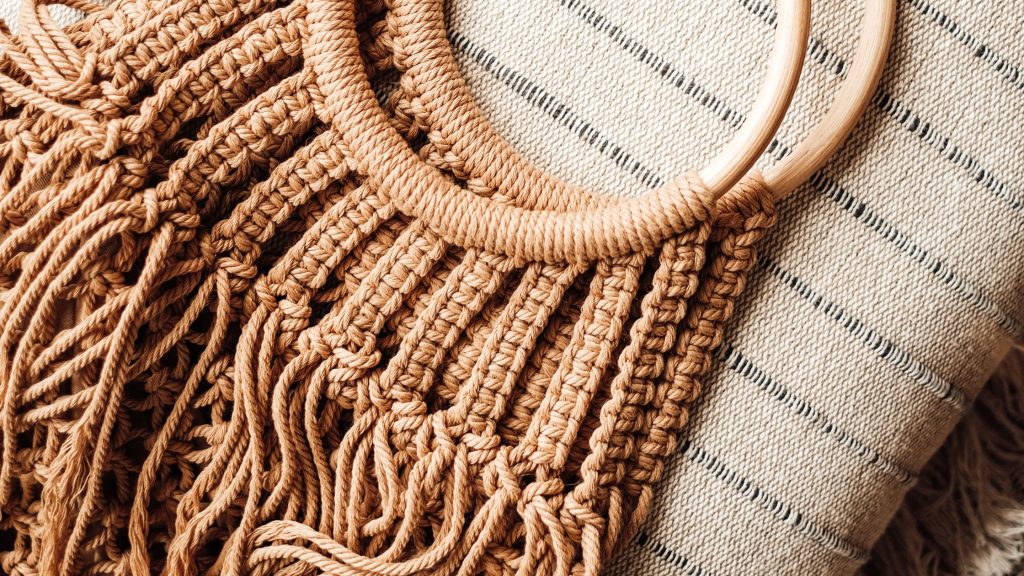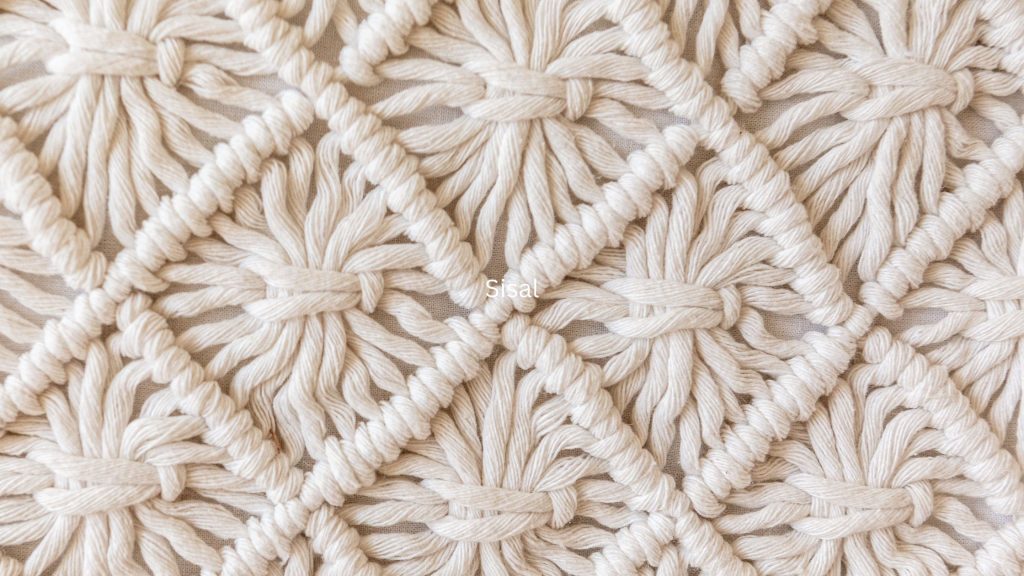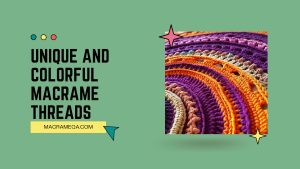Macrame, an ancient craft that has experienced a resurgence in recent years, has a rich history deeply rooted in the use of natural materials. In the earliest forms of macrame, artisans primarily utilized plant-based fibers such as jute, hemp, and cotton to create intricate designs and decorative knots. These materials not only provided durability but also allowed for flexibility and ease of manipulation. While modern macrame artists have expanded their repertoire to include a wider range of materials, the traditional use of these natural fibers remains an integral part of this ancient art form. So, let’s take a closer look at the fascinating history of macrame and the materials that have always played a crucial role in its creation.
Cotton
Cotton is one of the most commonly used materials in macrame due to its versatile nature and wide availability. It is a natural fiber that is derived from the cotton plant, making it a great choice for those who prefer working with organic materials. Cotton is especially popular in macrame because it comes in different thicknesses, allowing you to create intricate designs or more substantial pieces depending on your preference.
One of the reasons why cotton is so beloved by macrame enthusiasts is because it is easy to work with. Its soft and pliable nature makes it a breeze to manipulate, whether you are tying knots or braiding cords. You won’t have to worry about the material unraveling or breaking easily, as cotton is known for its durability. This makes it an excellent material for creating macrame wall hangings, plant hangers, or even fashion accessories like belts or jewelry.
Jute
If you’re looking for a material that exudes a natural and rustic vibe, jute is the perfect choice for your macrame projects. Known for its sturdy and strong characteristics, jute cords provide an ideal base for creating macrame pieces that are meant to withstand the test of time. Its natural tan color adds a touch of earthiness to your creations, making it a favorite for bohemian or beach-inspired decor.
Jute also has a rough texture, which gives an added dimension to your macrame designs. Whether you’re creating wall hangings, plant hangers, or even table runners, the coarse surface of jute adds an intriguing element to your finished product. Additionally, jute’s resilience to the elements makes it a fantastic option for outdoor macrame projects such as garden decorations or hammocks.
Hemp
For those who prioritize eco-friendly materials, hemp is an excellent choice for macrame projects. As one of the most sustainable natural fibers available, hemp boasts numerous environmental benefits. It requires less water and pesticides compared to cotton and can grow in various climates, making it a versatile and sustainable option.
In addition to its eco-friendly nature, hemp is also known for its strength and durability. It can withstand significant tension, making it suitable for creating macrame pieces that require sturdy support, such as hanging chairs or large wall tapestries. Hemp’s natural earthy color adds a rustic touch to your designs, lending a cozy and organic ambiance to any space. If you want to embrace a natural and sustainable approach in your macrame endeavors, hemp is an excellent material to consider.
Silk
For those who desire a touch of luxury and elegance in their macrame creations, silk is unmatched in its beauty and sheen. Derived from the fibers of silkworm cocoons, silk is known for its luxurious appearance and radiant shine. It offers a soft and smooth texture, making it incredibly pleasing to touch and work with.
Silk is often used in macrame for its delicate and elegant qualities. While it may not be the most durable material, silk is perfect for creating decorative macrame pieces such as wall hangings or intricate jewelry. The delicate nature of silk allows for intricate detailing and exquisite craftsmanship, resulting in visually stunning and sophisticated macrame designs. If you’re looking to add a touch of opulence and refinement to your macrame projects, silk is an excellent choice.
Wool
When it comes to creating warm and cozy macrame pieces, wool is the perfect material to bring your vision to life. Known for its excellent insulation properties, wool provides both warmth and style to your macrame creations. Whether you’re designing a chunky woolen blanket or a cozy home decor item, wool’s natural and insulating fibers will keep you snug during colder seasons.
Wool is available in various colors, allowing you to unleash your creativity and create vibrant macrame designs. From soft pastels to bold and vibrant hues, the color options with wool are endless. Whether you prefer a monochromatic look or a burst of contrasting shades, wool can deliver the perfect aesthetic for your macrame projects. It’s also a naturally flame-resistant material, adding an extra level of safety and comfort to your cozy home decor.
Linen
Linen, derived from the flax plant, is a unique material that offers a natural sheen and texture to your macrame projects. Linen is renowned for its soft and breathable qualities, making it a wonderful choice for macrame pieces that require a light and airy feel. Its smooth and crisp appearance gives a clean and sophisticated look to your creations, making them suitable for a range of home decor styles.
One of the advantages of using linen in macrame is its ability to blend seamlessly with other materials. Whether you choose to combine linen with cotton, jute, or silk, it harmoniously complements various fibers and textures. Linen is also highly absorbent, allowing it to hold dyes well. This makes it an ideal material for creating macrame pieces in vibrant colors, adding a pop of personality to your home decor.
Nylon
As a synthetic fiber, nylon is a popular choice for macrame projects that require strength, durability, and resistance to stretching. Unlike natural fibers, nylon possesses excellent resilience and robustness, making it suitable for macrame pieces that will be subjected to frequent tugging or tension. If you’re creating outdoor macrame decor, such as plant hangers or hammocks, nylon is a great choice due to its weather-resistant properties.
Nylon’s strength and durability are further enhanced by its capability to retain its shape even under extreme pressure. This ensures that your macrame creations remain intact and visually appealing over time. Additionally, nylon comes in various colors, allowing you to unleash your creativity and add a vibrant touch to your outdoor or jewelry-making projects.
Rayon
Rayon, an artificial fiber, is a versatile material that is often used for creating colorful and vibrant macrame designs. It has a smooth and soft texture, offering a luxurious feel to your macrame projects. Its flexibility and pliability make it easy to work with, allowing you to experiment with intricate knotting techniques and unique macrame patterns.
One of the standout qualities of rayon is its high dye absorption capability. This means that it readily absorbs dyes, resulting in vibrant and long-lasting colors. If you’re looking to create eye-catching macrame pieces that are bursting with hues, rayon is an excellent choice. Whether you’re designing macrame wall hangings, plant hangers, or even jewelry, rayon’s vibrant colors will add a lively and energetic touch to your creations.
Bamboo
If you prefer an eco-friendly and sustainable option for your macrame projects, bamboo is an excellent choice. As a fast-growing renewable resource, bamboo is known for its minimal environmental impact. Its lightweight and flexible nature makes it a pleasure to work with, allowing you to create delicate and intricate macrame designs effortlessly.
Bamboo brings a natural and earthy charm to your macrame creations. Its organic appearance is perfect for achieving a bohemian or minimalist aesthetic in your home decor. Whether you’re crafting bamboo macrame plant hangers or dreamcatchers, this versatile material will add a touch of rustic elegance to any space. Embrace sustainable crafting and let bamboo elevate your macrame projects to new heights.
Sisal
Sisal, a natural fiber derived from the agave plant, is a popular choice for creating rustic or bohemian-inspired macrame decor. With its durability and strength, sisal cords provide a robust foundation for macrame pieces that require sturdy support. Whether you’re designing a macrame wall hanging or a durable plant hanger, sisal’s coarse texture and resilience make it perfect for achieving a rustic or outdoor-inspired look.
The natural color of sisal further enhances its rustic appeal, bringing a sense of warmth and earthiness to your macrame projects. Its neutral tone allows for easy integration with various home decor styles, making it a versatile choice for creating macrame pieces that truly stand out. With sisal, you can infuse your space with a bohemian spirit and a touch of natural beauty.
Conclusion
In conclusion, macrame offers a vast array of material options to suit every preference and creative vision. From the soft elegance of silk to the rustic charm of jute, each material brings its unique characteristics to your macrame projects. Whether you prioritize eco-friendliness, durability, or vibrant aesthetics, there is a material that will perfectly suit your needs. So pick up your cords, choose your favorite material, and start creating stunning macrame pieces that will bring beauty and artistry into your life.

